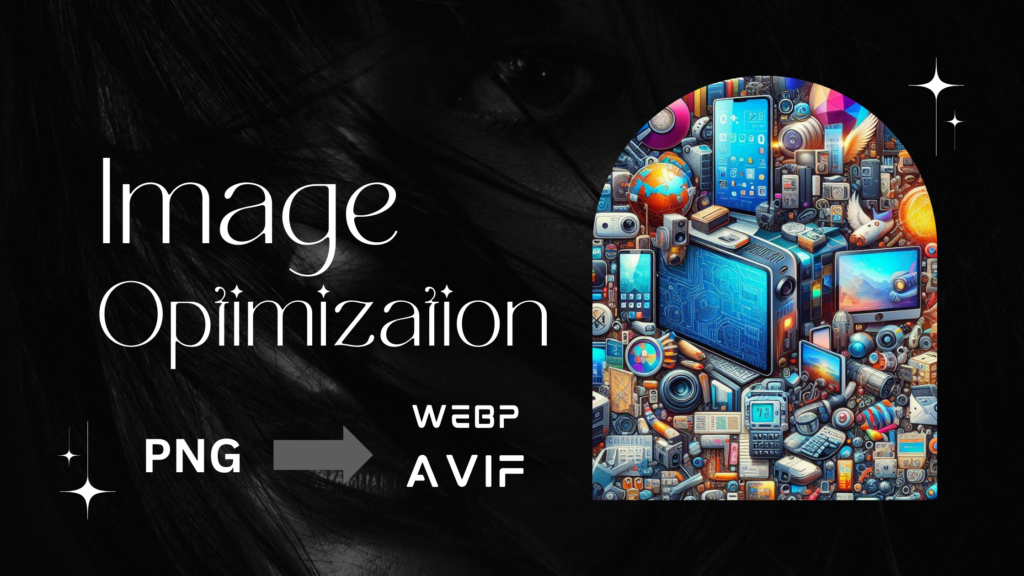In today’s digital landscape, where first impressions are made in the blink of an eye, image optimization stands out as an essential practice for anyone looking to enhance their online presence. Whether you’re a small business owner, a blogger, or an aspiring influencer, understanding the importance of image optimization in 2024 can significantly enhance your website’s performance and audience engagement.
What is Image Optimization?
At its core, image optimization involves reducing the file size of images without compromising quality, ensuring they load quickly on a website. It’s not just a technical task; it’s a crucial part of user experience and SEO that can make or break your online strategy.
Imagine this: You’re surfing the web, excited to read a captivating blog post, and BAM! The page is loading slower than molasses in winter. Frustration sets in, and before you know it, you’ve clicked away. This scenario highlights one of the primary reasons image optimization is vital.
1. Speed Matters
Page load speed is one of the most significant factors influencing user experience. According to Google, 53% of mobile users will abandon a website that takes longer than three seconds to load. Optimized images can shrink load times significantly. For instance, using modern formats like WebP can reduce image sizes by up to 30% compared to PNG or JPEG, resulting in faster load times and happier users.
WebP and AVIF are cutting-edge image formats designed with web performance in mind. WebP, developed by Google, supports both lossy and lossless compression, making it a versatile choice for web graphics. On the other hand, AVIF, based on the AV1 codec, offers even better compression efficiency and image quality, producing smaller files while maintaining rich details and color depth. Using these formats can significantly enhance load speed and user retention.
2. Boost Your SEO
Optimized images can enhance your site’s visibility in search engine rankings. Search engines like Google consider page speed when determining rankings, so faster-loading pages can lead to better SEO outcomes. Additionally, optimizing alt text—descriptive tags for images—helps search engines understand your content, further boosting SEO.
3. Enhances User Engagement
Engagement is crucial in digital marketing. Optimized images load quicker, making the browsing experience smoother and more enjoyable. Research shows that visual content is 40 times more likely to be shared on social media than other types of content. This means that high-quality, optimized images can help increase shares and interactions on platforms like Instagram, Facebook, and Pinterest.
Pros and Cons of Image Optimization
Every strategy has its ups and downs. Here’s a quick look at the pros and cons of image optimization:
Pros
- Faster Load Times: User-friendly sites are more likely to retain visitors.
- Improved SEO: Higher search ranking potential.
- Better User Experience: Seamless browsing leads to increased engagement.
- Lower Bandwidth Usage: Saves data for users, especially mobile visitors.
Cons
- Time-Consuming: Requires initial effort to optimize images, especially for a large library.
- Quality Loss: Over-optimization can lead to loss of image clarity if not handled correctly.
- Technical Skills Needed: Requires understanding of various formats and tools.
- Continuous Updates Required: With tech changes, regular check-ups are necessary for optimization.
4. Saves Bandwidth Costs
For businesses, especially those operating on a budget, image optimization can lead to significant savings on bandwidth. Smaller file sizes mean less data is used when a website is loaded. If you’re managing a high-traffic site, this can translate into substantial savings over time.
5. Mobile Optimization
With mobile devices accounting for over 50% of all web traffic, ensuring that your images are optimized for mobile viewing is critical. Mobile users expect fast load times and smooth experiences, and if images aren’t optimized, it detracts from their overall experience. Responsive design techniques, such as srcset attributes, allow different image sizes to be served based on the device, ensuring that mobile users don’t experience slower load times.
6. Future-Proof Your Website
As technology advances, user expectations will follow suit. Users will demand faster, more visually engaging experiences. By adopting image optimization practices now, you’re setting your website up for future success. Keeping up with trends in image formats and optimization techniques ensures that you remain competitive.
Tips for Effective Image Optimization
Now that we understand the “why,” let’s look at how we can achieve effective image optimization:
- Choose the Right Format: JPEG for photos, PNG for images with transparency, and WebP for web use are great choices.
- Compress Images: Use tools like TinyPNG or ImageOptim to reduce file sizes without sacrificing quality.
- Optimize Alt Text: Use descriptive, keyword-rich alt text for better SEO and accessibility.
- Lazy Load Images: This technique loads images only when they are in the viewport, speeding up initial page load times.
- Regularly Audit Images: Keep your image library updated and check for broken links or outdated content.
Conclusion
In 2024, image optimization isn’t just an optional enhancement; it’s a necessity. With faster load times, better SEO, and improved user experiences, optimized images can lead to increased engagement and conversions. Whether you’re a seasoned marketer or just starting out, prioritizing image optimization can set you apart in the competitive digital landscape.
So, take those extra minutes to optimize your images today, and watch how they work wonders for your website!
Melvin C Varghese is an author with more than 8 years of expertise in DevOps, SEO and SEM. His portfolio blogs include a Digital Marketing blog at https://melvincv.com/blog/ and a DevOps blog at https://blog.melvincv.com/. He is married with 2 small kids and is a simple person who eats, sleeps, works and plays. He loves music, comedy movies and the occasional video game.

